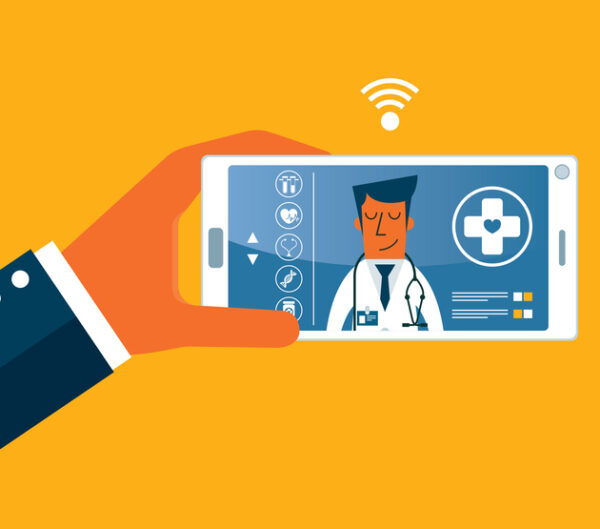
It is a well-documented fact that telehealth use exploded across the country in 2020, spurred by the Covid-19 pandemic. But several hurdles quickly emerged, including the question of how best to triage patients so those who are suited for care via telehealth are directed to those services.
To help address this issue, University of California Los Angeles Health spent months surveying its frontline physicians and understanding the barriers to effective virtual care delivery. They then created telehealth-specific triage protocols, health system leaders wrote in an article for NEJM Catalyst.
Demand for telehealth spiked once Covid-19 cases began spreading and lockdowns proliferated nationwide. At UCLA Health, telehealth visits in the department of medicine increased from less than 1% on March 9 to 55% on April 18 — a nearly 50-percentage point jump in fewer than 50 days. By November, telehealth usage had leveled off to around 25% of all visits.
In April and July 2020, UCLA Health surveyed its frontline primary care physicians on how the transition to telehealth had affected their ability to deliver care.
The April survey, which polled 228 physicians, found that 52% of the care that primary care physicians routinely provide could be conducted via telehealth without compromising quality.
Based on the results of the second survey, which included 232 responses, UCLA Health identified symptoms that could help the system direct patients to the appropriate type of visit, whether in person or via telehealth. Physicians ranked symptoms like chest pain, shortness of breath and ear pain or hearing changes as being the least appropriate to address via a video visit. Physicians also indicated certain patient factors made it more difficult to provide effective care through telehealth, including poor cognitive function and the patient being older than 70 years.

A Deep-dive Into Specialty Pharma
A specialty drug is a class of prescription medications used to treat complex, chronic or rare medical conditions. Although this classification was originally intended to define the treatment of rare, also termed “orphan” diseases, affecting fewer than 200,000 people in the US, more recently, specialty drugs have emerged as the cornerstone of treatment for chronic and complex diseases such as cancer, autoimmune conditions, diabetes, hepatitis C, and HIV/AIDS.
“These results emphasize that the ability to deliver high-quality care via telehealth is driven by both the presenting clinical concern and patient-specific factors,” the article authors wrote.
UCLA Health created a pilot telehealth triage protocol for patients scheduling an outpatient visit within its department of medicine. The protocol includes both a screening for Covid-19 symptoms, based on CDC guidelines, and a screening to determine telehealth appropriateness, based on feedback from UCLA Health’s physicians. [Click to enlarge image]
The telehealth appropriateness screening requires patients to answer a series of yes-or-no questions. These include questions like “Are you currently experiencing chest pain or heart palpitations?” and “Are you concerned that your symptoms require immediate or emergent attention?”
There have been some challenges related to the development of these protocols however, the authors noted, including achieving a consensus on the proper screener questions and modifying call center workflows to integrate the new triage questions.
“We urge health systems to seek the perspective of frontline staff and patients to inform the design of a telehealth-specific triage protocol because these individuals are in the best position to communicate the unique needs of the population being served and the current capabilities of health technology,” the authors wrote.
In addition, the authors offered the following nuggets of advice for health systems considering deploying telehealth-specific triage protocols:
1. Create a multidisciplinary team to assess and implement changes to the existing protocols.
2. Consider the risks linked to both virtual care and in-person care when developing the protocols.
3. Develop performance metrics and get feedback regularly from health system staff and patients.
“The rapid increase in telehealth utilization during the pandemic has opened up a new medium for our patients to seek and receive care, and we believe that as our triage protocols improve so will our ability to ensure patients receive timely and high quality care no matter whether they are seeing providers in clinic or via telehealth,” Dr. Daniel Croymans, medical director of quality at UCLA Health’s department of medicine and one of the article’s authors, said in an email.
Photo credit: Sorbetto, Getty Images, UCLA Health/NEJM Catalyst













